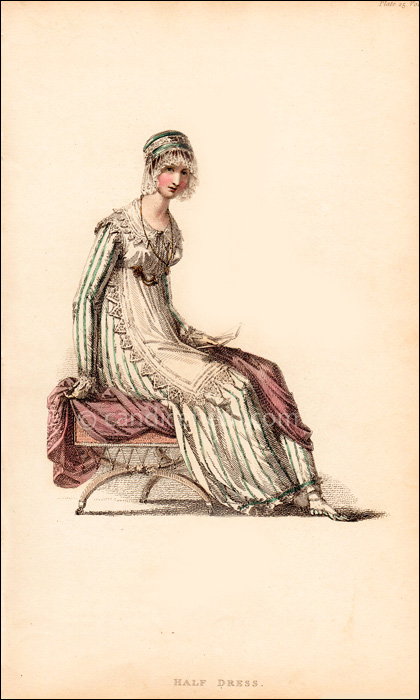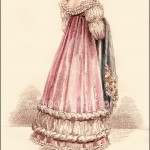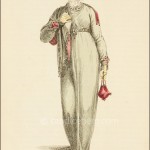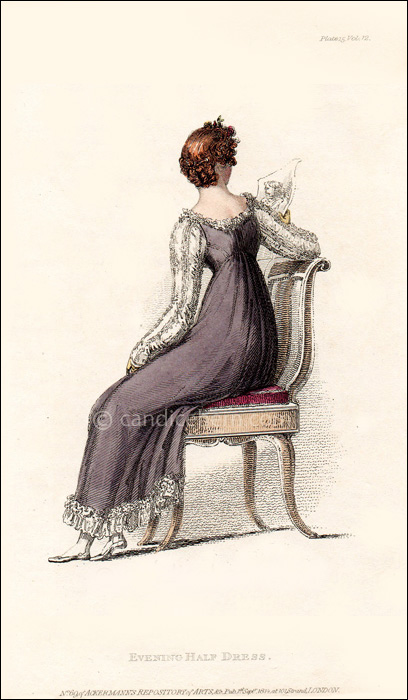Ackermann’s Repository of Arts, November 1814.
“Half Dress”
The apron is an unusual style for this period, but is quite becoming here, and seems to lend less formality to the ensemble, making it more of an afternoon or dinner dress than an opera dress. (The term Half Dress could have applied to all of those types of dress.) The text mentions the necklace but fails to point out the chain and fob at the waist. In imitation of a gentleman’s watch fob, it also suggests a chatelaine, and was a very popular piece of jewelry throughout the period. The shoes are called sandals, which does not refer to the type of open-toe shoe we know as sandals today. Any type of slipper that laced above the ankle was known as a sandal. These are described as “striped kid,” which meant painted leather.
The print is described in the magazine as follows:
“Green satin striped sarsent frock, ornamented round the bottom with a rich border, embroidered with shaded chenille; long full sleeve, confined at the wrist, and trimmed with Vandyke lace. A bodice and apron made of clear muslin, trimmed entirely round with Vandyke lace, and headed with a double row of white satin ribband; falling collar, trimmed to correspond. Cap composed of blond lace and satin, tied under the chin with a silk cord and tassel. Neck-chain and heart of Oriental gold. Gloves, Limerick or French kid. Sandals of striped kid.”








